Travelers 2012 Annual Report Download - page 31
Download and view the complete annual report
Please find page 31 of the 2012 Travelers annual report below. You can navigate through the pages in the report by either clicking on the pages listed below, or by using the keyword search tool below to find specific information within the annual report.-
 1
1 -
 2
2 -
 3
3 -
 4
4 -
 5
5 -
 6
6 -
 7
7 -
 8
8 -
 9
9 -
 10
10 -
 11
11 -
 12
12 -
 13
13 -
 14
14 -
 15
15 -
 16
16 -
 17
17 -
 18
18 -
 19
19 -
 20
20 -
 21
21 -
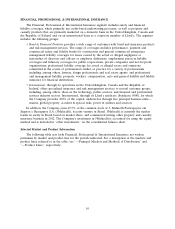 22
22 -
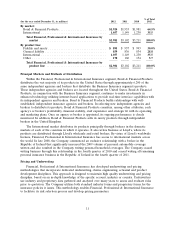 23
23 -
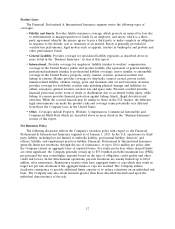 24
24 -
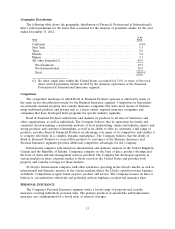 25
25 -
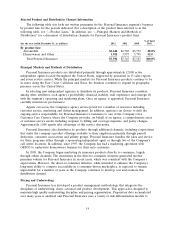 26
26 -
 27
27 -
 28
28 -
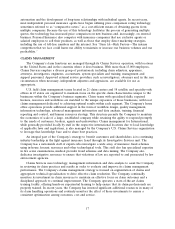 29
29 -
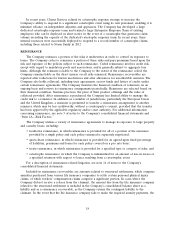 30
30 -
 31
31 -
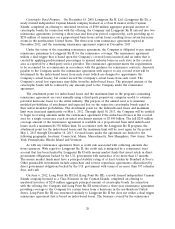 32
32 -
 33
33 -
 34
34 -
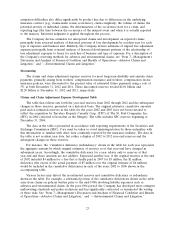 35
35 -
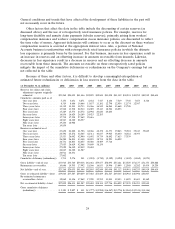 36
36 -
 37
37 -
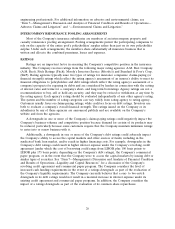 38
38 -
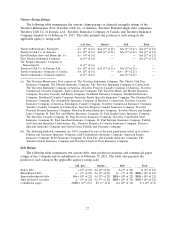 39
39 -
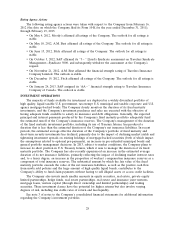 40
40 -
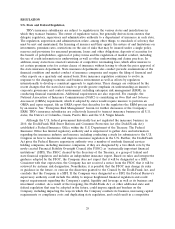 41
41 -
 42
42 -
 43
43 -
 44
44 -
 45
45 -
 46
46 -
 47
47 -
 48
48 -
 49
49 -
 50
50 -
 51
51 -
 52
52 -
 53
53 -
 54
54 -
 55
55 -
 56
56 -
 57
57 -
 58
58 -
 59
59 -
 60
60 -
 61
61 -
 62
62 -
 63
63 -
 64
64 -
 65
65 -
 66
66 -
 67
67 -
 68
68 -
 69
69 -
 70
70 -
 71
71 -
 72
72 -
 73
73 -
 74
74 -
 75
75 -
 76
76 -
 77
77 -
 78
78 -
 79
79 -
 80
80 -
 81
81 -
 82
82 -
 83
83 -
 84
84 -
 85
85 -
 86
86 -
 87
87 -
 88
88 -
 89
89 -
 90
90 -
 91
91 -
 92
92 -
 93
93 -
 94
94 -
 95
95 -
 96
96 -
 97
97 -
 98
98 -
 99
99 -
 100
100 -
 101
101 -
 102
102 -
 103
103 -
 104
104 -
 105
105 -
 106
106 -
 107
107 -
 108
108 -
 109
109 -
 110
110 -
 111
111 -
 112
112 -
 113
113 -
 114
114 -
 115
115 -
 116
116 -
 117
117 -
 118
118 -
 119
119 -
 120
120 -
 121
121 -
 122
122 -
 123
123 -
 124
124 -
 125
125 -
 126
126 -
 127
127 -
 128
128 -
 129
129 -
 130
130 -
 131
131 -
 132
132 -
 133
133 -
 134
134 -
 135
135 -
 136
136 -
 137
137 -
 138
138 -
 139
139 -
 140
140 -
 141
141 -
 142
142 -
 143
143 -
 144
144 -
 145
145 -
 146
146 -
 147
147 -
 148
148 -
 149
149 -
 150
150 -
 151
151 -
 152
152 -
 153
153 -
 154
154 -
 155
155 -
 156
156 -
 157
157 -
 158
158 -
 159
159 -
 160
160 -
 161
161 -
 162
162 -
 163
163 -
 164
164 -
 165
165 -
 166
166 -
 167
167 -
 168
168 -
 169
169 -
 170
170 -
 171
171 -
 172
172 -
 173
173 -
 174
174 -
 175
175 -
 176
176 -
 177
177 -
 178
178 -
 179
179 -
 180
180 -
 181
181 -
 182
182 -
 183
183 -
 184
184 -
 185
185 -
 186
186 -
 187
187 -
 188
188 -
 189
189 -
 190
190 -
 191
191 -
 192
192 -
 193
193 -
 194
194 -
 195
195 -
 196
196 -
 197
197 -
 198
198 -
 199
199 -
 200
200 -
 201
201 -
 202
202 -
 203
203 -
 204
204 -
 205
205 -
 206
206 -
 207
207 -
 208
208 -
 209
209 -
 210
210 -
 211
211 -
 212
212 -
 213
213 -
 214
214 -
 215
215 -
 216
216 -
 217
217 -
 218
218 -
 219
219 -
 220
220 -
 221
221 -
 222
222 -
 223
223 -
 224
224 -
 225
225 -
 226
226 -
 227
227 -
 228
228 -
 229
229 -
 230
230 -
 231
231 -
 232
232 -
 233
233 -
 234
234 -
 235
235 -
 236
236 -
 237
237 -
 238
238 -
 239
239 -
 240
240 -
 241
241 -
 242
242 -
 243
243 -
 244
244 -
 245
245 -
 246
246 -
 247
247 -
 248
248 -
 249
249 -
 250
250 -
 251
251 -
 252
252 -
 253
253 -
 254
254 -
 255
255 -
 256
256 -
 257
257 -
 258
258 -
 259
259 -
 260
260 -
 261
261 -
 262
262 -
 263
263 -
 264
264 -
 265
265 -
 266
266 -
 267
267 -
 268
268 -
 269
269 -
 270
270 -
 271
271 -
 272
272 -
 273
273 -
 274
274 -
 275
275 -
 276
276 -
 277
277 -
 278
278 -
 279
279 -
 280
280 -
 281
281 -
 282
282 -
 283
283 -
 284
284 -
 285
285 -
 286
286 -
 287
287 -
 288
288 -
 289
289 -
 290
290 -
 291
291 -
 292
292 -
 293
293 -
 294
294 -
 295
295 -
 296
296 -
 297
297 -
 298
298 -
 299
299 -
 300
300
 |
 |

Company would be required to make such payments, if and to the extent the purchased annuities are
not covered by state guaranty associations.
Catastrophe Reinsurance
Catastrophes can be caused by a variety of events, including, among others, hurricanes, tornadoes
and other windstorms, earthquakes, hail, wildfires, severe winter weather, floods, tsunamis and volcanic
eruptions. Catastrophes can also result from a terrorist attack (including those involving nuclear,
biological, chemical or radiological events), explosions, infrastructure failures or as a consequence of
political instability. The incidence and severity of catastrophes are inherently unpredictable. The extent
of losses from a catastrophe is a function of both the total amount of insured exposure in the area
affected by the event and the severity of the event. Most catastrophes are restricted to small geographic
areas; however, hurricanes and earthquakes may produce significant damage in larger areas, especially
those areas that are heavily populated. The Company generally seeks to manage its exposure to
catastrophes through individual risk selection and the purchase of catastrophe reinsurance. The
Company utilizes a general catastrophe reinsurance treaty with unaffiliated reinsurers to manage its
exposure to losses resulting from catastrophes. In addition to the coverage provided under this treaty,
the Company also utilizes a catastrophe bond program, as well as a Northeast catastrophe reinsurance
treaty, to protect against certain losses resulting from catastrophes in the Northeastern United States.
In addition, the Company also has a general catastrophe aggregate excess-of-loss reinsurance treaty, an
earthquake excess-of-loss reinsurance treaty and several reinsurance treaties specific to its international
operations.
General Catastrophe Reinsurance Treaty. The general catastrophe reinsurance treaty covers the
accumulation of net property losses arising out of one occurrence. The treaty covers all of the
Company’s exposures in the United States and Canada and their possessions, and waters contiguous
thereto, the Caribbean and Mexico. The treaty only provides coverage for terrorism events in limited
circumstances and excludes entirely losses arising from nuclear, biological, chemical or radiological
attacks.
The following table summarizes the Company’s coverage under its General Catastrophe
Reinsurance Treaty, effective for the period July 1, 2012 through June 30, 2013, as well as certain other
catastrophe-related coverages:
Layer of Loss Reinsurance Coverage In-Force
$0 - $1.5 billion ............ Loss 100% retained by the Company, except for certain
losses covered by the Earthquake Excess-of-Loss Treaty as
described below.
$1.5 billion - $2.25 billion ..... 53.3% ($400 million) of loss covered by treaty; 46.7%
($350 million) of loss retained by the Company.
Additionally, certain losses incurred in the Northeastern
United States are covered by the Catastrophe Bond
Program as described below.
Greater than $2.25 billion ..... 100% of loss retained by the Company, except for certain
losses incurred in the Northeastern United States, which
are covered by the Catastrophe Bond Program and
Northeast Catastrophe Treaty as described below.
In addition to the general catastrophe reinsurance treaty described above, the Company also
maintains a General Catastrophe Aggregate Excess-of-Loss Treaty, the coverage terms of which are
described below.
19
